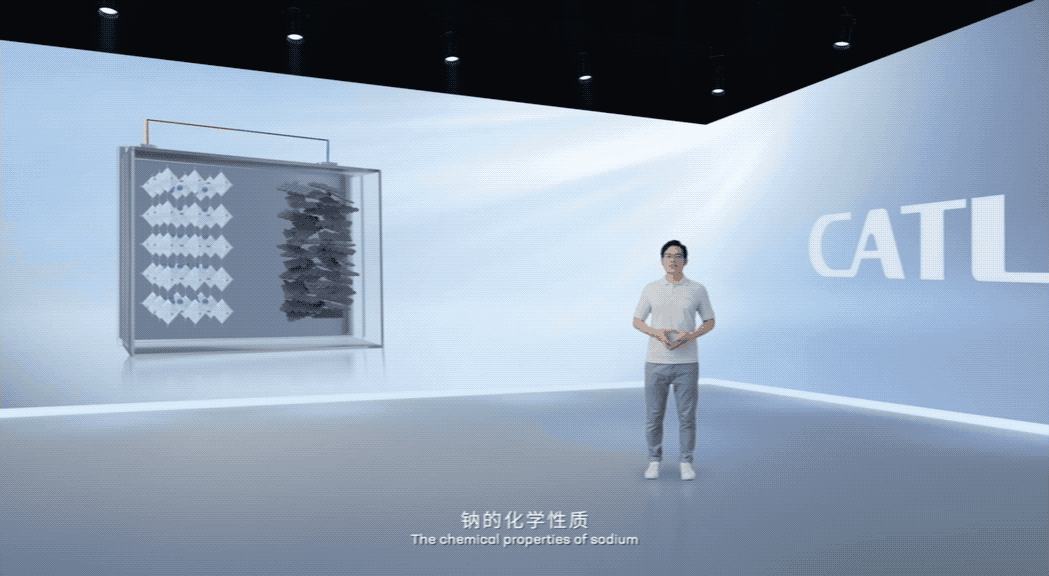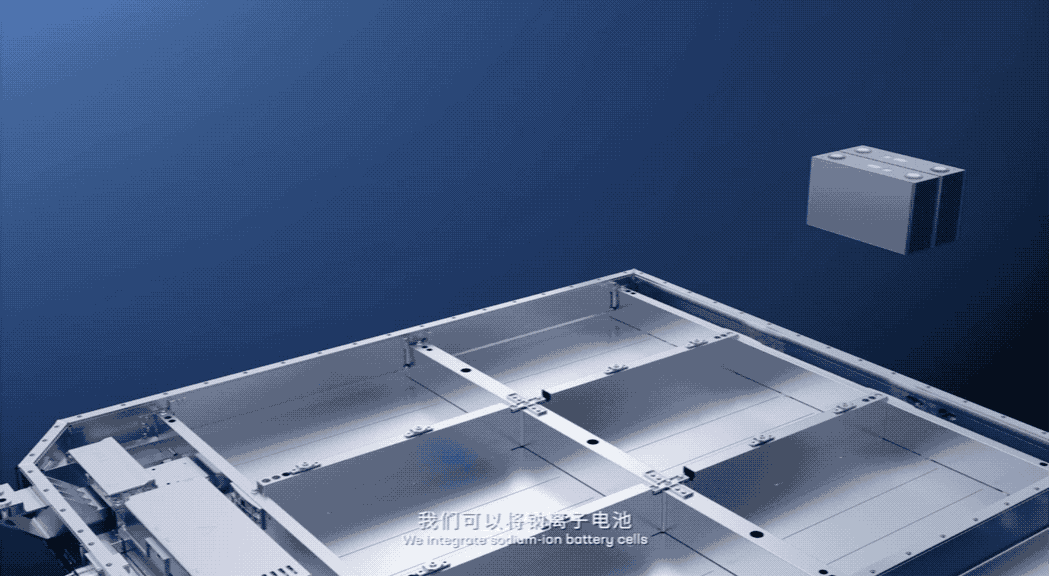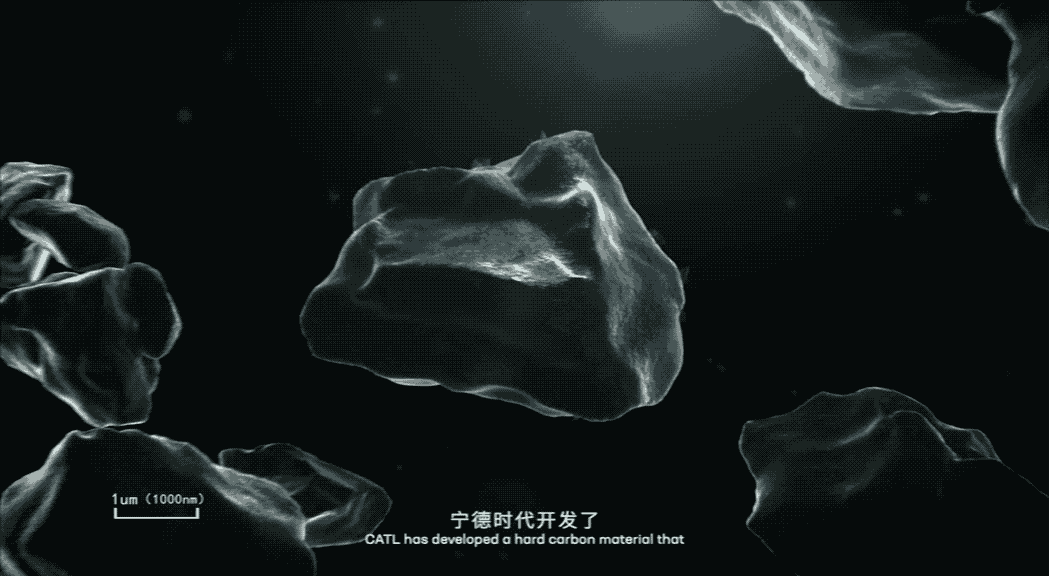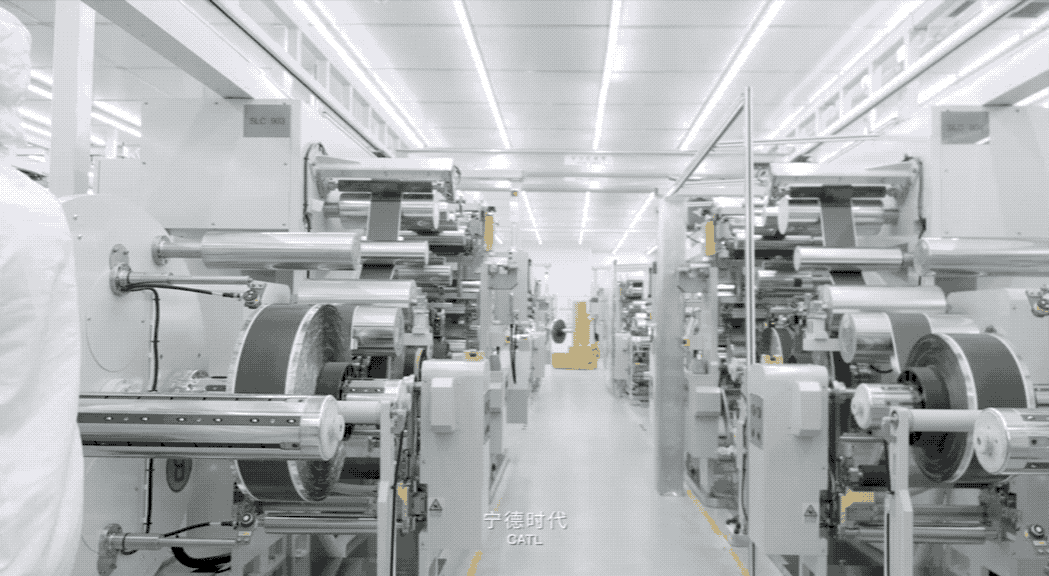Industry Observation|Can the sodium ion battery on the tuyere recreate the Ningde era?
The world of electrochemistry is like an energy cube, the unknown is far greater than the known
Ningde era first generation sodium ion battery
Wen|Li Yang
Ningde Times (330750.SZ), the largest new energy technology company in China, has entered the 2.0 era.
On the afternoon of July 29, at the first online press conference of CATL, Chairman Zeng Yuqun released the first generation of sodium-ion batteries. At the same time, the market positioning of the Ningde era has undergone a historic change. In the latest profile of the Ningde era, the identity of the “lithium-ion battery R&D and manufacturing company” has officially become a “new energy innovation and technology company.”
Zeng Yuqun believes that “carbon neutrality” has spawned trillions of watt-hour battery demand, and new application scenarios continue to emerge, giving a stage for different technologies to be displayed. Diversified technical routes will be the main theme of the future battery industry.
According to the plan of the Ningde era, a complete sodium ion battery production line will be completed and put into production before 2023. The energy density of the first-generation sodium-ion battery is 160 watt-hours per kilogram; the energy density of the second-generation sodium-ion battery can climb to 200 watts. Hour per kilogram. At the same time, hybrid battery packs of sodium/lithium-ion batteries will also be commercialized to meet more abundant market demand.
What exactly is a sodium ion battery?
The sodium-ion battery that was born out of the sky seems to be foggy, but in fact it is not a new technology. To understand sodium-ion batteries, you can use the same way to understand lithium-ion batteries.

Principle of Sodium Ion
On the periodic table of chemical elements, the positions of sodium and lithium are extremely close, which also means that the two have very similar chemical properties. In fact, the working mode of sodium-ion batteries is highly similar to that of lithium-ion batteries, and the charge transfer is realized through the insertion and extraction of metal ions between the positive and negative electrodes. Therefore, the composition of the sodium ion battery is also composed of four major raw materials: positive electrode, negative electrode, separator, and electrolyte.
The difference is that sodium ion has a higher potential than lithium ion and is larger in volume than lithium ion, which means that sodium ion batteries have more stringent requirements on material structural stability and dynamic performance. To put it simply, sodium ion batteries are not as good as lithium batteries in terms of energy density and cycle life. This also makes lithium ion batteries in the global wind and water, the sodium ion batteries that have been developed almost simultaneously have never been commercialized.
Despite the worldwide technical difficulties, the advantages of sodium batteries are also very obvious. Compared with the scarce and expensive lithium element, sodium can be seen everywhere in nature. Under the global energy reform, sodium ion batteries have great potential. At the same time, sodium ion The battery has excellent low temperature performance and has a wider range of use.
Finding a material system that breaks the shortcomings is the main direction of all sodium-ion battery researchers. Ningde era also took the lead in making important breakthroughs in the material system that enabled sodium-ion batteries to move from the laboratory to the production line.
The first-generation sodium-ion battery cells developed by CATL have a single energy density of 160 Wh per kilogram; charging at room temperature for 15 minutes can charge more than 80% of the power, and more importantly, in a low temperature environment of minus 20 degrees Celsius , Still has a discharge retention rate of more than 90%.

AB battery
At the same time, CATL is still in the battery system, creating the original AB battery pack mode, that is, the battery pack contains both sodium-ion batteries and lithium-ion batteries, which places extremely high requirements on the BMS system (battery management system). But the effect is also very significant. The new type of battery that balances the advantages and disadvantages of sodium-ion batteries and lithium-ion batteries no longer has obvious shortcomings and can meet the needs of more distant markets.
CATL predicts that by 2023, sodium-ion batteries will basically form a complete industrial chain and formally become a part of the multi-energy system.
The core technology on the tuyere
Sodium-ion batteries with significant advantages and disadvantages have very clear application scenarios. The first-generation sodium-ion batteries with a single energy density of 160 watt-hours per kilogram will be mainly used in energy storage, two-wheel electric vehicles and mini-electric vehicles. ; The second-generation sodium-ion battery with an energy density of 200 watt-hours per kilogram further enhances market competitiveness, and batteries such as lithium iron phosphate and ternary lithium form multiple complements.

Hard carbon
Moreover, due to cost and low-temperature performance, sodium ion has full market competitiveness in the field of energy storage, and energy storage is one of the most dazzling industrial outlets under the goal of carbon peaking and carbon neutrality. Energy storage is important for clean energy. The meaning is like a lake to a river. According to estimates, by 2030, the integration of optical storage in most areas of China can achieve parity, and the energy storage market space can reach more than 1.2 trillion yuan.
There is no doubt about the trend of energy storage, but the current energy storage methods in the industry are not satisfactory. The safe, long-lived, low-cost, large-scale energy storage technology is still not as expected. Only relying on lithium-ion batteries cannot meet the rapidly expanding energy storage market. .
History has also proved that, in most cases, only when the industry forms a multi-level, multi-type, and diversified model, can it have the market logic of sustainable development. For the single and huge battery market, the time is right for the technological breakthrough of sodium-ion batteries.
On July 15, the National Development and Reform Commission and the Energy Administration jointly issued the “Guiding Opinions on Accelerating the Development of New Energy Storage”, which also pointed out the necessity of the development of diversified technologies: “New energy storage is an important technology and foundation for supporting new power system systems. Equipment will play a significant role in promoting carbon neutralization in the energy sector. It is necessary to speed up the large-scale experiment and demonstration of flywheel energy storage and sodium ion batteries.”
The national level of support for sodium-ion batteries also demonstrates the infinite imagination of sodium-ion batteries from another perspective.
Can we recreate the Ningde era?
There is no doubt that sodium ion batteries have broad application prospects, but at this stage, they are not fully mature products. Due to the new positive and negative materials, there is no complete sodium ion battery industry on the market. It is not easy to establish a complete upstream and downstream industrial chain from scratch within two years.

Production line compatibility and industrial chain planning
Fortunately, due to the similarity of sodium-ion batteries and lithium-ion batteries, in addition to the positive and negative electrodes, the electrolyte has a higher similarity with lithium batteries, and the diaphragm can be directly compatible; the production process is almost seamless. Direct use of lithium-ion battery production equipment. This means that the industrialization of sodium-ion batteries can directly replicate or even graft the mature industrialization system of lithium batteries.
According to the “New Energy Outlook” annual report recently released by Bloomberg New Energy Finance, the demand for lithium-ion batteries for transportation and energy storage is expected to surge to 5.9 TWh (1 TWh equals 1 billion kWh) in 2030, and the entire 2020 In 2015, the output of lithium-ion batteries was only on the order of 0.1 TWh, which means that the battery industry chain will have a 60-fold increase in the next ten years.
In the 60-fold increment, how many are sodium-ion batteries? This is a tempting question. Although the current sodium-ion battery still has a certain gap with the lithium battery in terms of industrial maturity and performance, the technology has always been full of miracles.
When lithium batteries were commercialized in 1991, who could imagine that in just three decades, the application scenarios of lithium batteries have gone from the original mobile phones and computers to the current drones, cars, ships, etc., everywhere. In the past ten years, under the strong market demand, the energy density of lithium batteries has increased by three times, the cost has dropped by 80%, and the cycle life has reached 16 years.
Zeng Yuqun said at the press conference, “The world of electrochemistry is like an energy cube, the unknown is far greater than the known, and we will continue to explore the mysteries of it.”
The creativity of technology is far beyond imagination. Compared with the original lithium battery with an energy density of only 100 watt-hours per kilogram, sodium-ion batteries are undoubtedly standing at a higher starting point. It is not entirely impossible to recreate the Ningde era.
